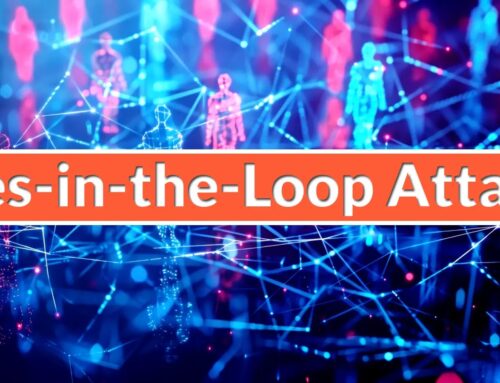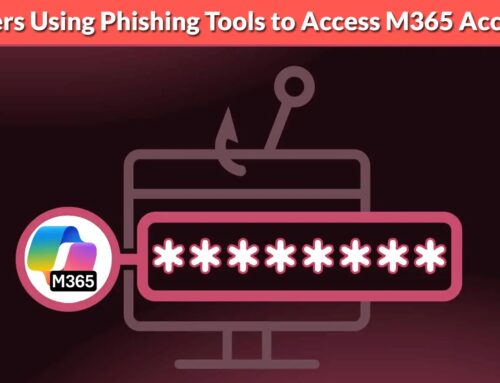
Chaos RaaS Emerges After BlackSuit Takedown, Demanding $300K from U.S. Victims
The cybersecurity landscape has once again been shaken, this time by the emergence of a new ransomware-as-a-service (RaaS) operation dubbed Chaos. This development comes on the heels of a law enforcement takedown of BlackSuit’s dark web infrastructure, strongly suggesting that Chaos is comprised of former BlackSuit members. The new threat actors are already making headlines with their audacious demands, including a reported $300,000 from U.S. victims. This analysis delves into the rise of Chaos RaaS, its operational tactics, and crucial steps organizations must take to fortify their defenses.
The Genesis of Chaos RaaS
Chaos RaaS surfaced in February 2025, quickly establishing itself as a formidable force in the ransomware arena. The swift appearance and sophisticated operational methods point to an experienced group, reinforcing the theory that it’s a direct evolution from the now-disrupted BlackSuit collective. The transition from BlackSuit to Chaos highlights a common tactic among ransomware gangs: reconstituting under a new name and infrastructure following law enforcement disruptions. This allows them to evade immediate capture and continue their illicit activities, often with enhanced or refined techniques.
Big-Game Hunting and Double Extortion Tactics
Like its predecessor and many other prominent RaaS groups, Chaos employs a strategy of “big-game hunting,” targeting large organizations and enterprises with the potential for massive payouts. Their operations are characterized by double extortion attacks. This involves not only encrypting a victim’s data, rendering it inaccessible, but also exfiltrating sensitive information. The stolen data is then used as additional leverage, threatening public release or sale on dark web forums if the ransom is not paid. This dual pressure significantly increases the likelihood of victims caving to demands to prevent both operational disruption and reputational damage.
Characteristics of Chaos RaaS Attacks
- High Ransom Demands: Early reports indicate Chaos is demanding significant sums, with figures reaching $300,000 from U.S. victims. This aggressive pricing strategy is indicative of their targeting of high-value organizations.
- Inferred Operational Sophistication: The rapid establishment and immediate engagement in complex attacks suggest a pre-existing arsenal of tools, expertise in stealthy network infiltration, lateral movement, and data exfiltration.
- Leveraging Disrupted Infrastructure: It’s highly probable that Chaos is repurposing or adapting tactics and tools previously used by BlackSuit, albeit with new command and control (C2) infrastructure to avoid detection.
- Focus on U.S. Entities: While ransomware is global, the specific mention of U.S. victims and high demands indicates a targeted approach towards entities perceived as having higher financial capacity and a greater impetus to pay.
Remediation and Prevention Actions Against Chaos RaaS
Defending against advanced RaaS groups like Chaos requires a multi-layered, proactive security posture. Organizations must prioritize robust preventative measures and have resilient incident response plans in place.
- Implement Strong Backup and Recovery Strategies: Regularly back up critical data to isolated, immutable storage solutions (e.g., off-site, cloud backups, or air-gapped systems). Test recovery procedures frequently to ensure data can be restored quickly and efficiently without paying a ransom.
- Enforce Principle of Least Privilege: Limit user and system access to only what is absolutely necessary for their function. This minimizes the attack surface and restricts lateral movement for attackers who gain initial access.
- Multi-Factor Authentication (MFA) Everywhere: Mandate MFA for all remote access, sensitive systems, and cloud services. This significantly reduces the risk of credential theft leading to network compromise.
- Segment Networks: Isolate critical systems and sensitive data away from general user networks. Network segmentation can contain a breach, preventing ransomware from spreading throughout the entire infrastructure.
- Regular Patch Management: Promptly apply security patches and updates to all operating systems, applications, and network devices. Ransomware actors frequently exploit known vulnerabilities (e.g., CVE-2023-XXXXX, CVE-2024-YYYYY – *Note: Specific CVEs related to Chaos’s initial access vectors are not yet publicly known from the source, hence placeholders are used. Real-world analysis would replace these with actual exploits Chaos is known to use.*) to gain initial access.
- Employ Endpoint Detection and Response (EDR) and Extended Detection and Response (XDR): These solutions provide advanced threat detection, visibility, and response capabilities on endpoints and across the IT environment, helping to identify and neutralize ransomware activity before encryption occurs.
- Conduct Regular Security Awareness Training: Educate employees about phishing, social engineering tactics, and the importance of reporting suspicious activities. Many ransomware attacks begin with human error.
- Threat Intelligence Integration: Stay updated on the latest threats, Tactics, Techniques, and Procedures (TTPs) of active RaaS groups like Chaos. Integrate threat intelligence feeds into security operations to enhance detection capabilities.
- Incident Response Plan: Develop, test, and refine a comprehensive incident response plan specifically for ransomware attacks. This plan should outline roles, responsibilities, communication strategies, and technical steps for containment, eradication, and recovery.
Tools for Detection and Mitigation
| Tool Name | Purpose | Link |
|---|---|---|
| CrowdStrike Falcon Insight | Advanced EDR for detection, prevention, and response to sophisticated threats. | https://www.crowdstrike.com/ |
| Microsoft Defender for Endpoint | Comprehensive endpoint security platform offering EDR, vulnerability management, and behavioral analytics. | https://www.microsoft.com/en-us/security/business/endpoint-security/microsoft-defender-for-endpoint |
| Veeam Backup & Replication | Leading solution for secure data backup, recovery, and replication, crucial for ransomware resilience. | https://www.veeam.com/ |
| Nessus (Tenable) | Vulnerability scanner for identifying weaknesses in systems and applications that ransomware can exploit. | https://www.tenable.com/products/nessus |
| FortiGate (Fortinet) | Next-generation firewall for network segmentation and intrusion prevention. | https://www.fortinet.com/products/next-generation-firewall |
Conclusion
The emergence of Chaos RaaS underscores the adaptive and persistent nature of cybercrime. The likely re-emergence of BlackSuit affiliates under this new moniker highlights that law enforcement efforts, while vital, often lead to the re-organization of criminal entities. Organizations must recognize the continuous threat landscape and invest proactively in robust cybersecurity frameworks. By adhering to best practices in data protection, access control, network segmentation, and threat detection, combined with continuous employee training and a well-defined incident response plan, businesses can significantly reduce their attack surface and resilience against the evolving tactics of groups like Chaos RaaS.





